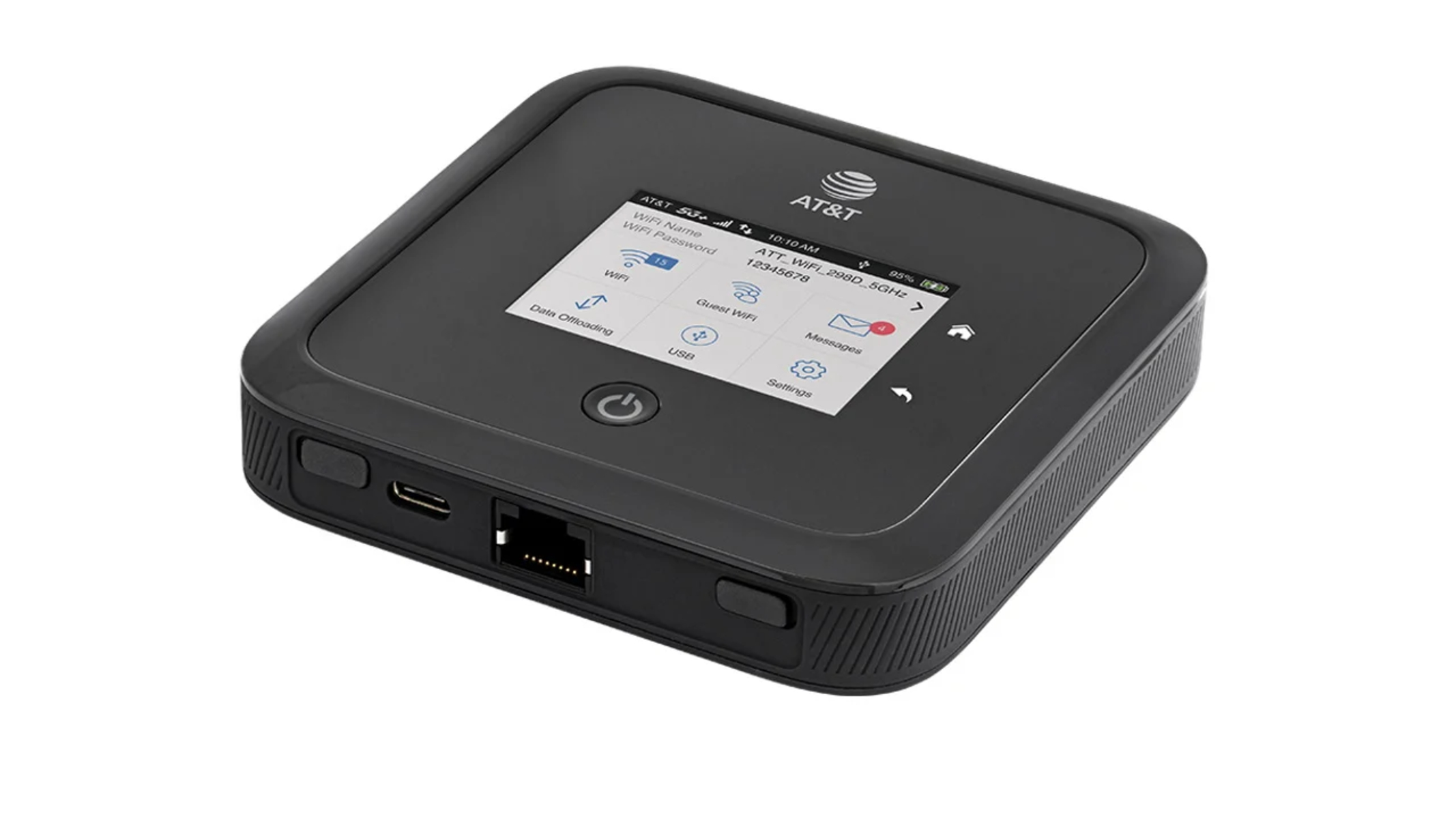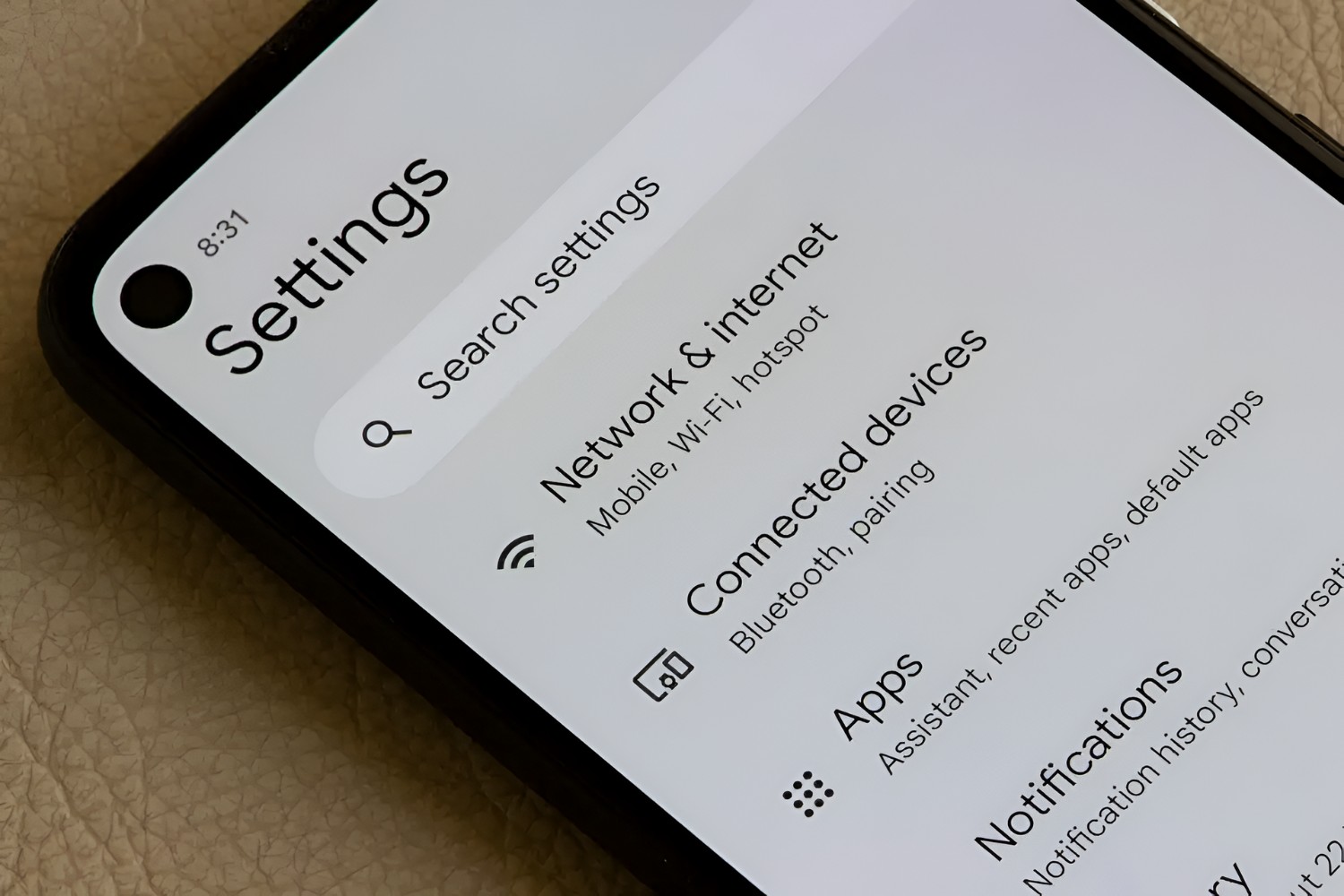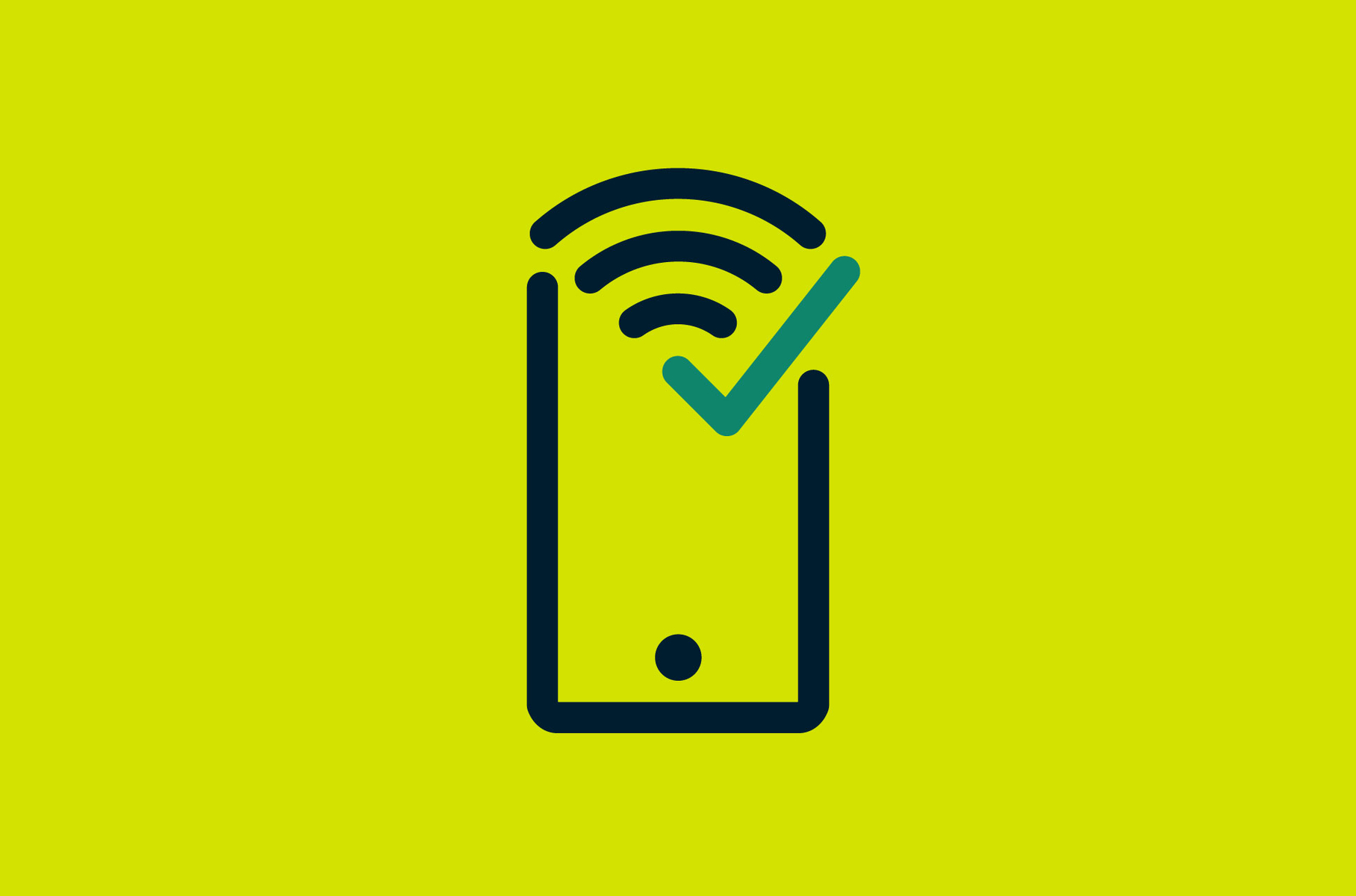Understanding Hotspot Performance
Hotspots have become an integral part of our modern lives, providing convenient access to the internet in various public spaces. Understanding the factors that influence hotspot performance is crucial for ensuring a seamless and reliable connection. Here are some key insights into hotspot performance that can help you optimize your setup for the best user experience.
-
Bandwidth Capacity: The bandwidth capacity of a hotspot determines the maximum data transfer rate it can support. Higher bandwidth capacity allows for faster internet speeds and better user experience, especially in high-traffic areas. It's essential to assess the bandwidth requirements based on the number of expected users and their typical usage patterns.
-
User Density: The number of concurrent users accessing the hotspot plays a significant role in determining its performance. Higher user density can strain the hotspot's capacity, leading to slower speeds and potential connection issues. Understanding the expected user density can help in choosing the appropriate equipment and optimizing the network configuration to accommodate the load.
-
Signal Strength: The strength and coverage of the wireless signal emitted by the hotspot greatly impact its performance. Weak signal strength can result in dead zones and poor connectivity, leading to user frustration. It's essential to strategically place the hotspot and optimize antenna configurations to ensure optimal signal strength and coverage across the intended area.
-
Network Congestion: Hotspots operating in crowded or densely populated areas are susceptible to network congestion, which can degrade performance. Identifying peak usage times and implementing strategies to manage congestion, such as load balancing and prioritizing traffic, can help mitigate the impact of network congestion on hotspot performance.
-
Latency and Jitter: Latency, the delay in data transmission, and jitter, the variation in packet arrival times, can significantly affect the perceived performance of a hotspot. Minimizing latency and jitter is crucial for real-time applications and services, such as video calls and online gaming, where responsiveness is paramount.
Understanding these key factors that influence hotspot performance is essential for implementing effective optimization strategies. By addressing bandwidth capacity, user density, signal strength, network congestion, and latency, hotspot operators can enhance the overall performance and user satisfaction, ensuring a seamless and reliable connectivity experience for everyone.
Choosing the Right Location
Selecting the optimal location for a hotspot is a critical decision that significantly impacts its performance and user experience. The physical placement of the hotspot can determine signal coverage, user accessibility, and overall connectivity reliability. Here's an in-depth exploration of the factors to consider when choosing the right location for a hotspot:
Coverage Area Assessment
Before installing a hotspot, it's essential to conduct a thorough assessment of the intended coverage area. Understanding the spatial layout, potential obstacles, and user traffic patterns within the area is crucial for identifying the most strategic placement. By considering the physical dimensions and layout of the space, hotspot operators can determine the number of access points required and their ideal placement to ensure comprehensive coverage without signal dead zones.
User Accessibility
The accessibility of the hotspot to users is a key consideration when selecting the location. Placing the hotspot in a central and easily accessible area within the coverage zone ensures that users can connect to the network without encountering physical barriers or obstructions. Additionally, considering the typical user activities and gathering points within the space can guide the placement to maximize user accessibility and convenience.
Environmental Factors
Environmental conditions, such as interference from other wireless devices, structural obstacles, and electromagnetic interference, can impact the performance of a hotspot. Choosing a location that minimizes potential interference and maximizes signal propagation is essential for optimizing connectivity. Additionally, accounting for environmental factors, such as temperature and humidity, is important to ensure the longevity and reliability of the hotspot equipment.
Power and Connectivity Infrastructure
The availability of power sources and network connectivity infrastructure directly influences the feasibility of a hotspot location. Ensuring proximity to power outlets and network connectivity points simplifies the installation process and minimizes the need for extensive cabling or infrastructure modifications. By selecting a location with readily available power and connectivity resources, hotspot deployment can be streamlined and cost-effective.
Future Scalability
Anticipating future scalability and expansion is crucial when choosing the right location for a hotspot. Selecting a location that allows for seamless integration of additional access points or equipment to accommodate growing user demands ensures long-term viability and adaptability. Considering the potential for future expansion and technological advancements enables hotspot operators to make informed decisions that support sustained performance and user satisfaction.
By carefully evaluating the coverage area, user accessibility, environmental factors, infrastructure availability, and future scalability, hotspot operators can make informed decisions when choosing the right location for their hotspots. This strategic approach to location selection lays the foundation for optimal performance, seamless connectivity, and enhanced user satisfaction, ultimately contributing to the success of the hotspot deployment.
Optimizing Antenna Placement
Optimizing the placement of antennas is a critical aspect of maximizing the performance and coverage of a hotspot network. Strategic antenna placement can significantly enhance signal propagation, minimize interference, and ensure comprehensive coverage within the intended area. Here's an in-depth exploration of the best practices for optimizing antenna placement to elevate the performance of your hotspot network:
Site Survey and Analysis
Before determining the placement of antennas, conducting a comprehensive site survey and analysis is essential. This involves evaluating the physical layout of the deployment area, identifying potential obstacles or signal obstructions, and assessing the propagation characteristics of the wireless signals. By understanding the unique features of the site, such as building materials, structural elements, and environmental factors, hotspot operators can make informed decisions regarding antenna placement to maximize signal coverage and minimize signal degradation.
Signal Propagation Considerations
Understanding the propagation characteristics of wireless signals is crucial for optimizing antenna placement. Different types of antennas, such as omnidirectional and directional antennas, have distinct signal propagation patterns. Omnidirectional antennas emit signals in all directions, making them suitable for providing 360-degree coverage in open spaces. On the other hand, directional antennas focus signals in specific directions, making them ideal for targeting coverage to specific areas or overcoming signal obstructions. By selecting the appropriate antenna type and strategically placing them based on signal propagation requirements, hotspot operators can optimize coverage and signal strength.
Avoiding Signal Obstructions
Identifying and mitigating potential signal obstructions is essential for optimizing antenna placement. Physical obstacles, such as walls, large structures, and electronic equipment, can attenuate wireless signals and hinder coverage. By strategically positioning antennas to minimize the impact of signal obstructions, hotspot operators can enhance signal propagation and ensure consistent connectivity throughout the deployment area. Additionally, considering the elevation and mounting options for antennas can further mitigate the effects of signal obstructions and improve overall coverage.
Interference Management
Managing interference from external sources is critical for optimizing antenna placement. Interference from neighboring wireless networks, electronic devices, and environmental factors can degrade signal quality and impact hotspot performance. By strategically positioning antennas to minimize interference sources and leveraging technologies such as beamforming and frequency optimization, hotspot operators can mitigate the effects of interference and enhance the overall reliability and performance of the hotspot network.
Future Scalability and Flexibility
Anticipating future scalability and flexibility is essential when optimizing antenna placement. Selecting a placement strategy that allows for easy expansion and adaptation to evolving network requirements ensures long-term viability and cost-effective scalability. By considering the potential for future technology upgrades and network expansion, hotspot operators can strategically position antennas to support future growth and technological advancements.
By following these best practices for optimizing antenna placement, hotspot operators can elevate the performance, coverage, and reliability of their networks. Strategic antenna placement, informed by site surveys, signal propagation considerations, obstruction mitigation, interference management, and future scalability, lays the foundation for a robust and high-performing hotspot network that meets the connectivity needs of users and supports future growth and innovation.
Managing Interference
Managing interference is a critical aspect of optimizing the performance and reliability of a hotspot network. Interference from external sources, including neighboring wireless networks, electronic devices, and environmental factors, can significantly impact signal quality and disrupt connectivity. By implementing effective interference management strategies, hotspot operators can mitigate the effects of interference and ensure a seamless and consistent user experience.
Interference Identification
The first step in managing interference is to identify the sources and types of interference affecting the hotspot network. This involves conducting a thorough assessment of the deployment area to pinpoint potential interference sources. Common sources of interference include overlapping wireless networks operating on the same or adjacent channels, electronic devices emitting electromagnetic noise, and environmental factors such as physical obstructions and atmospheric conditions. By understanding the specific interference sources, hotspot operators can develop targeted mitigation strategies to minimize their impact on the network.
Frequency Optimization
Frequency optimization plays a key role in managing interference within a hotspot network. By selecting optimal wireless channels and leveraging technologies such as automatic channel selection and dynamic frequency selection, hotspot operators can minimize the impact of co-channel and adjacent channel interference from neighboring networks. Additionally, implementing frequency band steering and band optimization techniques can further enhance the network's resilience to interference, ensuring consistent and reliable connectivity for users.
Beamforming Technology
Utilizing beamforming technology is an effective strategy for managing interference and optimizing signal propagation within a hotspot network. Beamforming enables antennas to dynamically adjust their signal directionality, focusing transmission towards intended devices while minimizing interference from unwanted directions. By leveraging beamforming capabilities, hotspot operators can enhance signal strength, improve coverage, and mitigate the effects of external interference, resulting in a more robust and reliable network performance.
Interference Mitigation Techniques
Implementing interference mitigation techniques, such as power control, adaptive modulation, and interference cancellation algorithms, can significantly improve the network's resilience to external interference sources. Power control mechanisms dynamically adjust transmission power levels to minimize interference while maintaining optimal signal quality. Adaptive modulation techniques enable the network to adapt to changing interference conditions, optimizing data transmission rates and reliability. Furthermore, interference cancellation algorithms can effectively suppress unwanted interference signals, enhancing the overall network performance and user experience.
Environmental Shielding and Isolation
Physical and environmental factors, such as building materials, structural obstacles, and electromagnetic noise sources, can contribute to interference within a deployment area. Implementing shielding measures, such as using specialized materials to minimize signal leakage and environmental isolation techniques to reduce the impact of external interference, can significantly enhance the network's resilience to environmental factors. By strategically addressing environmental interference sources, hotspot operators can create an optimized and interference-resistant network environment.
By proactively managing interference through identification, frequency optimization, beamforming technology, interference mitigation techniques, and environmental shielding, hotspot operators can ensure the reliability, performance, and resilience of their networks. These strategies collectively contribute to a robust and interference-resilient hotspot network, delivering consistent connectivity and a seamless user experience in diverse deployment environments.
Upgrading Equipment
Upgrading equipment is a pivotal strategy for enhancing the performance, reliability, and capabilities of a hotspot network. As technology continues to evolve and user demands grow, keeping the network infrastructure up to date is essential for delivering optimal connectivity and meeting the evolving needs of users. Here's an in-depth exploration of the significance and best practices associated with upgrading hotspot equipment.
Performance Enhancement
Upgrading equipment, such as access points, routers, and network switches, presents an opportunity to leverage the latest technological advancements to enhance the overall performance of the hotspot network. Newer hardware often offers improved processing power, higher data transfer rates, and enhanced signal coverage, enabling the network to handle increased user density and bandwidth requirements more effectively. By upgrading to advanced equipment, hotspot operators can elevate the network's performance, reduce latency, and deliver faster and more reliable connectivity to users.
Compatibility and Standards Compliance
Technology standards and protocols continue to evolve to support faster speeds, improved security, and greater efficiency in wireless communication. Upgrading equipment ensures compatibility with the latest industry standards, such as the IEEE 802.11ac or 802.11ax standards for Wi-Fi, enabling the network to benefit from advancements in data transmission, security protocols, and network management features. By adhering to current standards and protocols, hotspot operators can future-proof their networks and ensure seamless interoperability with a wide range of devices and technologies.
Security and Encryption
Security is a paramount concern in wireless networks, especially in public hotspots where user data privacy and network integrity are of utmost importance. Upgrading equipment allows hotspot operators to implement the latest security features, encryption algorithms, and authentication mechanisms to safeguard user data and protect the network from potential threats. Advanced security capabilities, such as WPA3 encryption and secure access controls, can be integrated through equipment upgrades, fortifying the network against unauthorized access and cyber threats.
Scalability and Future-Proofing
Anticipating future growth and scalability is a key consideration when upgrading hotspot equipment. Investing in scalable and future-proof hardware ensures that the network can adapt to increasing user demands, evolving technology standards, and emerging connectivity requirements. Upgraded equipment with modular and expandable features provides the flexibility to accommodate additional users, expand coverage areas, and integrate new technologies without requiring a complete overhaul of the network infrastructure.
Management and Monitoring Capabilities
Modern hotspot equipment often includes advanced management and monitoring capabilities that streamline network administration, troubleshooting, and performance optimization. Upgrading to equipment with centralized management interfaces, real-time analytics, and remote monitoring capabilities empowers hotspot operators to efficiently oversee network operations, identify potential issues, and proactively address performance bottlenecks. Enhanced management features contribute to improved network stability, reduced downtime, and better overall user experience.
By prioritizing the upgrade of hotspot equipment, operators can unlock a myriad of benefits, ranging from performance enhancements and security fortification to future scalability and advanced management capabilities. The strategic deployment of upgraded equipment aligns with the dynamic nature of wireless connectivity, ensuring that hotspot networks remain at the forefront of technological innovation and continue to deliver reliable, high-speed internet access to users across diverse deployment environments.
Monitoring and Maintenance
Effective monitoring and proactive maintenance are vital components of ensuring the ongoing performance, stability, and security of a hotspot network. By implementing robust monitoring practices and adhering to a comprehensive maintenance regimen, hotspot operators can preemptively identify potential issues, optimize network resources, and uphold a seamless connectivity experience for users.
Real-time Performance Monitoring
Continuous real-time monitoring of the hotspot network facilitates the timely detection of performance anomalies, network congestion, and connectivity issues. Utilizing network monitoring tools and analytics platforms enables operators to assess key performance metrics, such as bandwidth utilization, packet loss, and latency, allowing for immediate intervention in the event of deteriorating network performance. Real-time monitoring empowers operators to maintain optimal network conditions and swiftly address emerging issues to uphold a consistent user experience.
Proactive Fault Identification
Implementing proactive fault identification mechanisms, such as automated alerting systems and anomaly detection algorithms, enables hotspot operators to swiftly identify and address potential network faults or irregularities. By setting up automated alerts for critical network parameters and leveraging anomaly detection algorithms to pinpoint unusual network behavior, operators can proactively mitigate issues before they escalate, minimizing service disruptions and user impact.
Regular Equipment Maintenance
Scheduled equipment maintenance, including firmware updates, hardware inspections, and performance optimizations, is essential for ensuring the longevity and reliability of hotspot infrastructure. By adhering to a structured maintenance schedule, operators can address potential vulnerabilities, apply security patches, and optimize the performance of network equipment. Regular maintenance activities contribute to the overall stability and security of the network, reducing the likelihood of downtime and enhancing user satisfaction.
Security Audits and Compliance Checks
Conducting regular security audits and compliance checks is imperative for safeguarding user data and network integrity within a hotspot environment. By routinely assessing security configurations, encryption protocols, and access controls, operators can identify and rectify potential security gaps or non-compliance issues. Proactive security audits contribute to maintaining a secure and trusted network environment, instilling confidence in users and mitigating the risk of security breaches.
User Experience Optimization
Monitoring user experience metrics, such as connection success rates, throughput, and session quality, provides valuable insights into the overall satisfaction of hotspot users. By tracking user experience indicators and soliciting feedback, operators can identify areas for improvement, optimize network configurations, and tailor the connectivity experience to meet user expectations. Proactively addressing user experience concerns enhances user retention and loyalty, contributing to the success of the hotspot deployment.
By prioritizing robust monitoring practices and proactive maintenance efforts, hotspot operators can uphold the performance, reliability, and security of their networks. Continuous real-time monitoring, proactive fault identification, regular equipment maintenance, security audits, and user experience optimization collectively contribute to sustaining a high-quality connectivity experience, fostering user trust, and ensuring the long-term success of hotspot deployments.
Utilizing Hotspot Management Tools
Utilizing advanced hotspot management tools is instrumental in streamlining network administration, optimizing performance, and ensuring the seamless operation of hotspot deployments. These tools encompass a diverse range of capabilities, including network monitoring, configuration management, analytics, and remote troubleshooting, empowering operators to efficiently oversee and maintain the hotspot infrastructure. Here's an in-depth exploration of the key aspects and benefits associated with utilizing hotspot management tools:
Centralized Network Monitoring and Control
Hotspot management tools provide a centralized platform for real-time network monitoring, allowing operators to gain comprehensive visibility into key performance metrics, device status, and user connectivity. By leveraging centralized monitoring interfaces, operators can proactively identify potential issues, assess network health, and swiftly respond to emerging challenges, ensuring optimal network performance and user satisfaction.
Configuration Management and Automation
Automating configuration management tasks through hotspot management tools streamlines the deployment and maintenance of network devices, access points, and security settings. These tools facilitate the efficient provisioning of network resources, the enforcement of standardized configurations, and the seamless implementation of policy updates, reducing the likelihood of configuration errors and enhancing network stability.
Performance Analytics and Reporting
Hotspot management tools offer robust performance analytics and reporting capabilities, enabling operators to derive actionable insights from network data and usage patterns. By analyzing performance metrics, traffic trends, and user behavior, operators can make informed decisions regarding network optimization, capacity planning, and resource allocation, ultimately improving the overall efficiency and quality of the hotspot network.
Remote Troubleshooting and Diagnostics
The remote troubleshooting features of hotspot management tools enable operators to diagnose and address network issues from a centralized location, minimizing the need for on-site interventions. Through remote diagnostics, configuration adjustments, and firmware updates, operators can swiftly resolve connectivity issues, mitigate service disruptions, and uphold the reliability of the hotspot network.
User Management and Access Controls
Effective user management and access controls are facilitated by hotspot management tools, allowing operators to administer user permissions, enforce security policies, and monitor user activity. These tools empower operators to implement secure authentication mechanisms, manage user access privileges, and ensure compliance with data protection regulations, fostering a trusted and secure user environment.
By harnessing the capabilities of hotspot management tools, operators can optimize network performance, enhance operational efficiency, and deliver a seamless connectivity experience to users. The comprehensive features encompassing centralized monitoring, configuration automation, performance analytics, remote troubleshooting, and user management collectively contribute to the sustained success and reliability of hotspot deployments.

























